INKredible India: The story of 2014 Lok Sabha election - All you need to know
Lok Sabha election 2014 was a big push to reclaim power by the Bharatiya Janata Party with Narendra Modi projected as the PM candidate. Congress, on the other hand, looked massively jaded after accusations of scams and scandals galore through the course of the five years of UPA II.
Trending Photos
) PTI File photo
PTI File photo Lok Sabha election 2014 dawned in India after two successive terms of the United Progressive Alliance’s government under Dr Manmohan Singh which saw more than half a dozen corruption scandals spill out from closed closets. While Manmohan Singh is widely regarded to have been free from taint, his image of being silent in the face of these scandals – and possible inability to having prevented them – put Congress firmly on the backfoot after ten years of being in power.
Political analysts and economists largely feel that while UPA I had a number of merits to its credit and had been able to put India in a strong position to handle the global economic crisis of 2008, the tenure of UPA II reversed most of the goodwill earned between 2004 and 2009.
To brazenly claim that Manmohan Singh’s government did nothing right in the years between 2004 and 2009 would possibly be incorrect. The Congress continues to claim that a number of its schemes were re-packaged by the successive government and that UPA II had concentrated on keeping India’s growth trajectory upwards, worked on providing jobs and given impetus to infrastructure projects, among others. And yet, these formed mere pale shadows to the actual silhouette of much more darker and sinister scandals.
Scandals under UPA II
2G Spectrum Scam – The UPA came under fire when news of the 2G Spectrum Scam broke out. Allegations of massive corruption were made against telecom minister A. Raja who was under the spotlight on charges of under-pinning the rates at which 2G licenses were given to private companies. The basis of issuing licenses was also questioned with suspicions that companies with no prior experience were given these licenses. The Comptroller and Auditor General of India (CAG) estimated that the corruption scandal caused a presumptive loss of Rs 1.76 lakh crore to the government. Raja and Kanimozhi were even jailed, but were eventually acquitted by a special CBI court.
CWG scam – Suresh Kalmadi became the mascot for corruption as India prepared to host the Commonwealth Games in 2010. Charges against the chairman of the Organising Committee of CWG in Delhi were rampant. The Congress MP from Pune was accused of illegally awarding a contract to Swiss Timing at bloated rates. There were also concerns that infrastructure in Delhi to host the events were often substandard with reports of ceilings collapsing, rickety railings, improper fittings, etc making global headlines. While work was somehow completed before the start of the event, the months leading into the CWG caused India massive embarrassment globally. Kalmadi eventually spent some time in jail – once claiming he has dementia, while being investigated.
Coal scam – It is estimated that the government suffered a loss to the tune of Rs 1.86 lakh crore after CAG revealed that allocation of 194 coal blocks involved a number of irregularities.
Chopper scam – The UPA government chose to buy a number of VVIP helicopters from AgustaWestland – an Italian company – in 2012. The plan backfired when it was revealed in Italy that the company may have paid kickbacks to secure contracts around the world. There were allegations in India that the company may have also paid bribes here, putting even the then Air Chief Marshal SP Tyagi under the spotlight. Several Congress leaders have also been accused of having received kickbacks. While the deal was eventually put off, reverberations of the chopper scam in 2012 are felt till date with the alleged middleman – Christian Michel – in custody and under investigation.
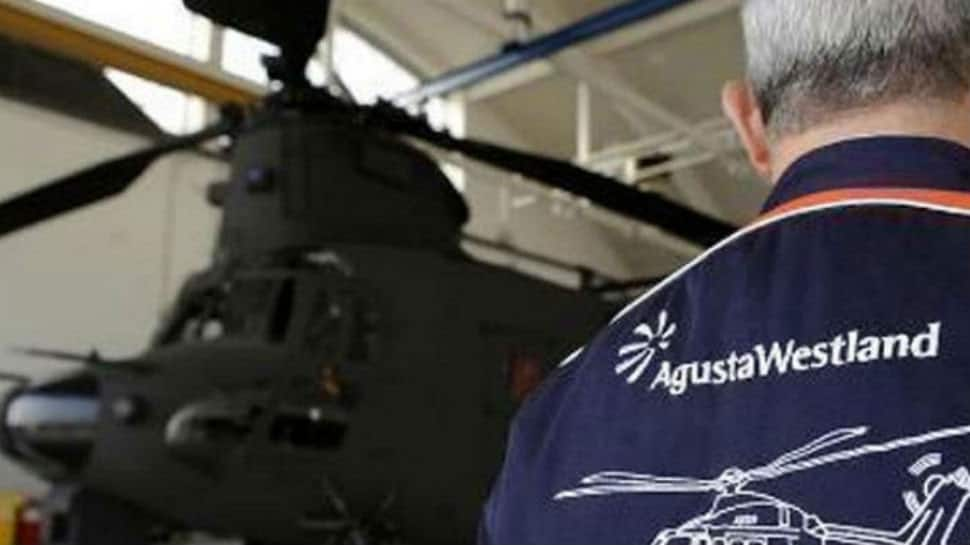
These and several other scandals like Adarsh Scam, Tatra Truck Scam, Satyam Scam, etc caused massive embarrassment to the UPA and a general wave of anti-Congress sentiment appeared on the political landscape of India, especially with the start of the India Against Corruption movement.
India Against Corruption
The India Against Corruption (IAC) movement saw a series of anti-corruption protests which were organised in 2011 and 2012. While it was primarily centred in Delhi, similar movements also spread to other parts of the country with noted social reformer Anna Hazare at the helm.
IAC sought to rid India of corruption by creating a nation-wide demand for creation of Lokpak which would have the powers to charge government officials facing accusations of corruption.
It was a mass movement led by apolitical figures – even though some of the members of the core committee eventually formed their own political parties. Called Team Anna, the members of IAC managed to garner mass support through their peaceful protests. The general mood of the country was against corruption of any kind and IAC built upon it.
BJP’s five years
The Bharatiya Janata Party, the lead opposition party, kept the pressure on the UPA throughout its second term in power. Pinning its main attack on the shards of corruption scandals breaking out into public glare, BJP led a solid campaign targeted at hitting the image of Congress.
The BJP, however, had internal changes adrift within its own ranks by 2013. Sushma Swaraj had already been named the Leader of Opposition in Parliament after the Lok Sabha election in 2009 and in the subsequent years, the need for a leader besides LK Advani was being felt increasingly. There were also reported differences between the old guard and the new front within BJP - consisting of Narendra Modi and Amit Shah. There was a convention in Goa to iron out the differences once Modi had already been named the campaign head for the party in 2013 for Lok Sabha election next year. The main outcome was a stamp of approval for Modi and Shah to take charge of the party's electoral strategy.
The eventual battle for power before for the Lok Sabha election was pinned by BJP on Modi’s leadership and Shah’s electoral acumen.
Election 2014 – Status of states:
The Lok Sabha election 2014 was conducted across 35 states and union territories in India. These were:
Andhra Pradesh
Assam
Arunachal Pradesh
Bihar
Goa
Gujarat
Haryana
Himachal Pradesh
Jammu and Kashmir
Karnataka
Kerala
Madhya Pradesh
Maharashtra
Manipur
Meghalaya
Mizoram
Nagaland
Orissa
Punjab
Rajasthan
Sikkim
Tamil Nadu
Tripura
Uttar Pradesh
West Bengal
Andaman and Nicobar Islands
Chandigarh
Chhattisgarh
Jharkhand
Uttarakhand
Dadra and Nagar Haveli
Daman and Diu
National Capital Territory of Delhi
Lakshadweep
Pondicherry
Political parties in the fray:
There were six national parties and another 38 state parties which contested the Lok Sabha 2009 election, apart from many other registered (unrecognised) parties. These were:
National Parties:
Bharatiya Janata Party
Bahujan Samaj Party
Communist Party of India
Communist Party of India (Marxist)
Indian National Congress
Nationalist Congress Party
State Parties:
Aam Aadmi Party
All India Anna Dravida Munnetra Kazhagam
Asom Gana Parishad
All India Forward Bloc
All India N.R. Congress
All India Trinamool Congress
AJSU Party
Biju Janata Dal
Bodoland Peoples Front
Desiya Murpokku Dravida Kazhagam
Dravida Munnetra Kazhagam
Haryana Janhit Congress (BL)
Indian National Lok Dal
Indian Union Muslim League
Janata Dal (Secular)
Janata Dal (United)
Jammu and Kashmir National Conference
Jammu and Kashmir National Panthers Party
Jammu and Kashmir Peoples Democratic Party
Jharkhand Mukti Morcha
Jharkhand Vikas Morcha (Prajatantrik)
Kerala Congress (M)
Lok Jan Shakti Party
Maharashtra Navnirman Sena
National Peoples Party
Naga Peoples Front
Pattali Makkal Katchi
Peoples Party of Arunachal
Rashtriya Janata Dal
Rashtriya Lok Dal
Revolutionary Socialist Party
Shiromani Akali Dal
Sikkim Democratic Front
Shiv Sena
Samajwadi Party
Telugu Desam
Telangana Rashtra Samiti
United Democratic Party
Election 2014:
The Lok Sabha election in 2014 was a massive turning point in India in ways more than one. The UPA had been at the helm of governance for ten years and its two tenures had left Congress red-faced and looking extremely vulnerable. Anti-incumbency was a massive factor and so were the long list of scams and scandals that had eroded the image of the party and the alliance.
Then, there was the BJP which promised to fight a solid and dedicated campaign around Narendra Modi, who was increasingly being seen as someone who could inject a powerful dose of life into the country’s governance. Modi was not a completely unknown player in the national scene and had made news repeatedly as a four-time CM of Gujarat.
The battle lines were clearly drawn as Congress propelled Rahul Gandhi to lead its campaign with Manmohan Singh and Sonia Gandhi. Manmohan Singh would announce that he was not a candidate for the post of PM, which led to speculation that Rahul would replace him if the party won.
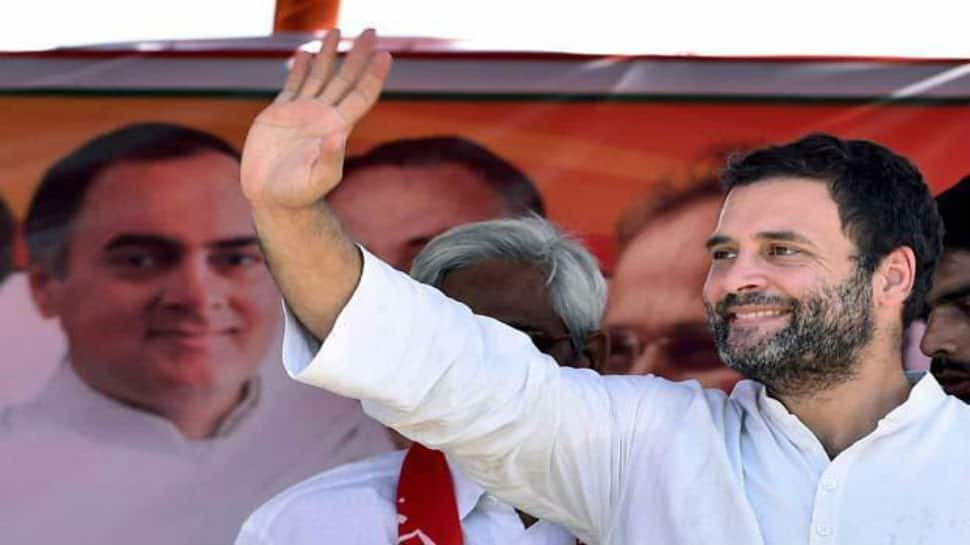
Rahul for Congress and Modi for BJP painted contrasting images, but both leaders began their campaigns in earnest.
Lok Sabha election 2014 was held in all 543 parliamentary constituencies in nine phases, between April 7 and May 12. With more than 83 crore eligible voters, the election was the biggest ever anywhere in the world till that period in time. First-time voters – between the ages 18 and 21 – accounted for 2.7 per cent of all those eligible to vote.
The electorate had to choose between 8,251 candidates who were trying their political fortunes – the largest number since the Lok Sabha election in 1996.
Conducting elections of such ginormous proportions meant humungous challenges for the Election Commission of India (ECI), which once again rose to the occasion. The polling would be conducted in over 9.19 lakh booths across the country and special attention was given to ensuring that most of these were easily accessible – especially to the differently-abled, and had facilities like shade, drinking water and required security cover to ensure fair and peaceful polling.
Game of Manifestos
In its 27-page manifesto, Congress pitched itself as ‘the only choice.’ It spoke of having handled the global economic crisis well for India under UPA’s second term in office, of having worked for empowerment of the marginalised and downtrodden and of having increased food production from 213 million tonnes to 263 million tonnes since 2004, of rural development and of working to eradicate poverty.
The Congress manifesto also blasted the NDA government of the past, and squarely trained its guns on the BJP. “The BJP’s narrow and communal perspective denies equality to all. Theirs is an exclusionary doctrine,” the manifesto read.
Congress then outlined its vision for India if it came to power once again. Promising to take care of all sections of society, put special focus on women’s safety and propel the Indian economy, the party also underlined its commitment towards transparent and accountable governance. The word ‘corruption’ figured 15 times in the entire manifesto.
The BJP manifesto, in contrast, was a near-perfect blend of attack against UPA as well as a solid plan of action for the country in the immediate future.
The manifesto attacked UPA on a number of fronts:
* Governance of Enactment, not Action
* Administration of Entitlement without Delivery
* Polity of Promises and nor Performance
* Economy of Deficits
* Work culture of delays and an asset base of deficiency
* Global synonym of Corruption, Scandal and Stagnation
Slogans like ‘Sabka Saath Sabka Vikas’ became the BJP’s war cry. The party manifesto assured of a more involved governance, development of all regions – including north-east, decentralisation of power, priority to the national interest, promoting Digital India and boost to infrastructure, creating jobs – starting a Skill India Mission, stamping out corruption and bringing back black money. The manifesto also made special references to dealing with cross-border terrorism, exploring all possibilities within the constitutional framework to facilitate construction of Ram Temple in Ayodhya and housing for all by 2022. Social-media outlets too were used more than ever before to reach out to people.
Narendra Modi led the campaign blitzkrieg for the BJP and addressed a total of 437 big rallies and participated in 5827 public events. In all, he travelled 3 lakh kilometres across 25 states in the country. He would eventually opt to contest the election from Varanasi Lok Sabha constituency from where party veteran Murli Manohar Joshi had won in 2009. Modi also contested from Vadodara.
In contrast, Rahul opted to once again contest from the Gandhi family bastion of Amethi and he got down to campaigning at a time when Modi had already taken a sizeable lead in reaching out to the people in the country.
After hectic and often fierce campaigns, and after nine phases of voting across 36 days, BJP emerged from the dust with one of the biggest mandates ever seen in India’s recent electoral history. The party had managed to cruise past the majority mark on its own and secured 282 seats to become the first non-Congress party in Independent India to single-handedly cross the magic number required to form government.
While Modi himself won by a record margin in Varanasi, from where Arvind Kejriwal of AAP had sought to challenge him, the BJP almost swept UP (71 seats), MP (27) and Jharkhand (12), and completely swept Gujarat, Rajasthan, Uttarakhand and Delhi.
The party’s performance in states which had traditionally never favoured it - like West Bengal and Kerala – was also heartening. While it won two seats in West Bengal, its voter share saw an upward swing in West Bengal and Kerala.
A study by Delhi’s Centre for the Study of Developing Societies in the immediate aftermath of the result also pointed to a marginal shift of the Muslim vote towards BJP. Even if microscopic, this was quite significant.
Most alliance partners under the NDA umbrella too performed commendably, with Shiv Sena winning 18 of the 20 seats it fought the election in Maharashtra. The Lok Janshakti Party won six of seven seats it contested from in Bihar.
The Lok Sabha election in Andhra Pradesh was held concurrently with the state assembly election and this was the last time that the state voted as a whole. The elections took place with the common knowledge that the state would be bifurcated into Andhra Pradesh and Telangana immediately after the results. Nonetheless, TDP – alliance member of NDA - secured 16 seats.
| HOW BHARATIYA JANATA PARTY FARED | HOW CONGRESS FARED | ||
|---|---|---|---|
| States | Seats won | States | Seats won |
| Andaman & Nicobar Islands | 1 | Andaman & Nicobar Islands | 0 |
| Andhra Pradesh | 3 | Andhra Pradesh | 2 |
| Arunachal Pradesh | 1 | Arunachal Pradesh | 1 |
| Assam | 7 | Assam | 3 |
| Bihar | 22 | Bihar | 2 |
| Chandigarh | 1 | Chandigarh | 0 |
| Chhattisgarh | 10 | Chhattisgarh | 1 |
| Dadra & Nagar Haveli | 1 | Dadra & Nagar Haveli | 0 |
| Daman & Diu | 1 | Daman & Diu | 0 |
| Goa | 2 | Goa | 0 |
| Gujarat | 26 | Gujarat | 0 |
| Haryana | 7 | Haryana | 1 |
| Himachal Pradesh | 4 | Himachal Pradesh | 0 |
| Jammu & Kashmir | 3 | Jammu & Kashmir | 0 |
| Jharkhand | 12 | Jharkhand | 0 |
| Karnataka | 17 | Karnataka | 9 |
| Kerala | 0 | Kerala | 8 |
| Lakshadweep | 0 | Lakshadweep | 0 |
| Madhya Pradesh | 27 | Madhya Pradesh | 2 |
| Maharashtra | 23 | Maharashtra | 2 |
| Manipur | 0 | Manipur | 2 |
| Meghalaya | 0 | Meghalaya | 1 |
| NCT OF Delhi | 7 | Mizoram | 1 |
| Odisha | 1 | Nagaland | 0 |
| Punjab | 2 | NCT OF Delhi | 0 |
| Rajasthan | 25 | Odisha | 0 |
| Sikkim | 0 | Puducherry | 0 |
| Tamil Nadu | 1 | Punjab | 3 |
| Tripura | 0 | Rajasthan | 0 |
| Uttar Pradesh | 71 | Sikkim | 0 |
| Uttarakhand | 5 | Tamil Nadu | 0 |
| West Bengal | 2 | Tripura | 0 |
| Uttar Pradesh | 2 | ||
| Uttarakhand | 0 | ||
| West Bengal | 4 | ||
| TOTAL | 282 | TOTAL | 44 |
The Congress, in sharp contrast, was absolutely decimated to its worst showing ever. The party managed to win just 44 seats – most wins coming from far pockets of the country. It had a humiliating voter share of 19%. In the Hindi belt, the party managed wins in only seven seats – a performance even worse than the one in 1977.
Such was the margin of its defeat that it was not even able to officially claim itself as the party in Opposition. Its alliance partners under UPA also fared miserably, with the RJD winning just four of the 28 seats it contested in Bihar, NCP finding success in just six of 26 and Rashtriya Lok Dal being bowled out for zero.
The Congress-DMK alliance – which had failed to attract smaller parties in Tamil Nadu before the election - was also annihilated, with the AIADMK sweeping 37 of 39 seats here after opting to battle the election on its own. The remaining two seats in Tamil Nadu were taken by NDA which had all other state parties in its fold – BJP winning one and PMK taking the other.
The result of Lok Sabha election 2014 was an absolute knockout punch for Congress and a massive show of resurgence for BJP after being out of power for ten years. It emerged as the biggest political force which now threatened to knock out India’s oldest political party out of the park completely.
Stay informed on all the latest news, real-time breaking news updates, and follow all the important headlines in india news and world News on Zee News.
Live Tv



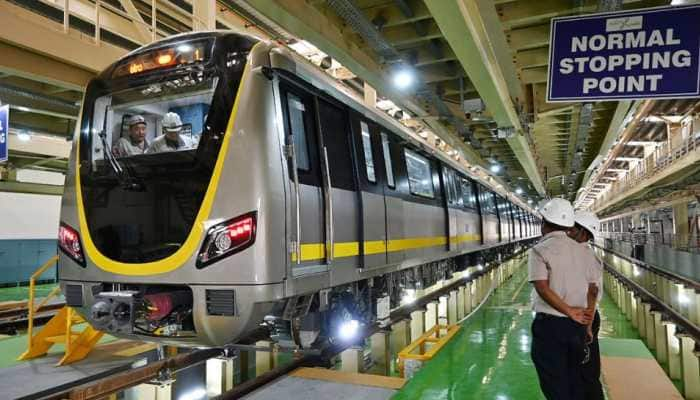
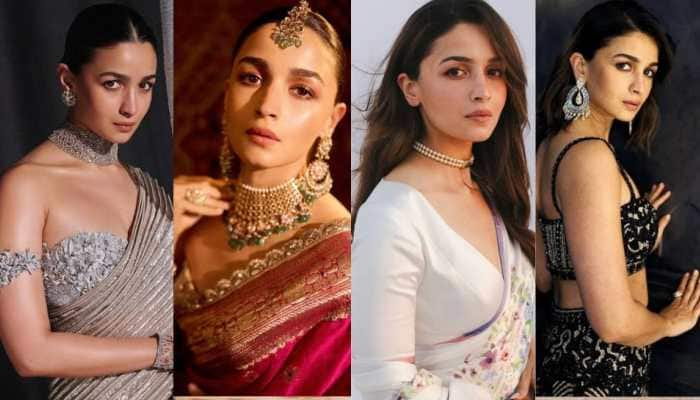
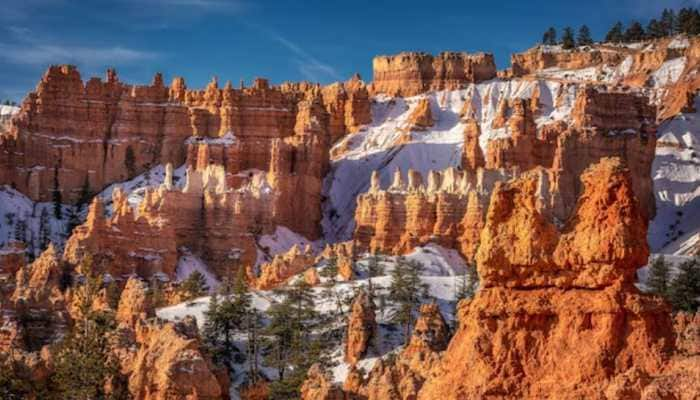

)
)
)
)
)
)
)
)
)
)
